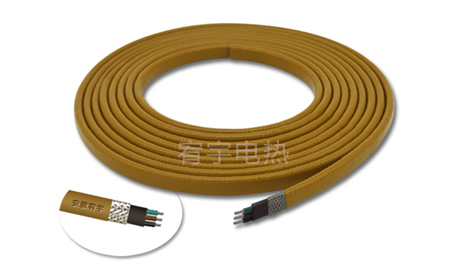Series constant-power electric heating cable is widely used in petroleum, chemical, electric power and other industries to trace heat insulation or maintain process temperature. Its single length is long, especially suitable for large-diameter and long-distance pipelines and tanks. The electric heating product of the core wire heating body, that is, when a current is passed through the core wire with a certain resistance, the core wire will generate heat.
The series constant-power electric heating cable has the characteristics of the same core wire current and equal resistance, and its output power is constant and not affected by the ambient temperature and pipeline temperature, and it will not cause the tail end power as the length of use increases like the parallel type electric heating cable. Low. In order to ensure the safe use and service life of the series constant power, special attention should be paid to the power connection during installation. The method is described as follows:
1. Strip off the inner and outer sheath and insulation of the series electric heating cable to expose the heating core wire, and use a copper connector to crimp the cold end wire (with the insulation layer stripped in advance).
2. Use 3M tape for wrapping, and leave the braid outside for grounding.
3. Then put four layers of heat shrinkable sleeves on them respectively, and use a hair dryer to heat the heat shrinkable sleeves to tightly wrap them on the joints.
Compared with other electric heating cable products, the usage rate of the series constant power electric heating cable is not high, but the use length and uniform temperature are the main advantages. At present, it is widely used in anti-freezing of offshore platform pipelines, heat tracing of oil production shafts (replacing water jackets), heat tracing of sewage wells, anti-freezing maintenance of concrete products, anti-ice and snow-freezing of airport runways, and tunnel fire protection and anti-freezing.

